Keyword research is the first step in SEO and a fundamental best practice. At some point it’s a good idea to start thinking about keywords, and it can also be a part of an SEO audit.
If you end up in a situation where a company or small business already has SEO operations, they might have identified keywords that they are targeting, as part of their SEO or search marketing efforts (where they are jumping above organic search results and buying ads on Google). Even if there are some insights available, it can still help to regularly look for new opportunities for keywords that you can target with both SEO and SEM (search engine marketing). Understanding the relationship among SEO, SEM, and keywords can also help you ask the right questions. For example, a company might have a person working on SEM (i.e., buying ads on Google and other search engines), and that person might have insights on keywords to target, even if they weren’t doing SEO before.
So this chapter takes a closer look at keywords, the way SEO and SEM relate, and some of the tools you can use to explore keywords.
Understanding Keywords
If you’re not quite sure yet how keywords work or how they relate to SEO, the best way to get familiar with the process is to go to Google and search for a product. Let’s use tennis rackets as an example.

Q: What keywords are people using to get to our site?
A: In some cases you can know this, by using Google Analytics on your site (see Introduction to Google Analytics) and connecting your site to Google Webmaster Tools. In Google Analytics, you look at the keywords that people use to get to your site, through Google organic searches (meaning not through an ad). This might result in keywords that you already knew about, but it might also reveal other keywords.
Q: What kinds of keywords are people who might be interested in your site using?
A: To me, this is the central question of SEO and SEM, whether you are going for organic search results or working on choosing keywords for an ad campaign. This is where you try to imagine current customers or supporters, or potential customers. You try to imagine the kind of person who might be interested in what you have to offer, and then target the kind of keywords they use.
Keyword Opportunities
Those keywords out there that people are typing in represent an opportunity. As you work through the overall process of SEO, you should develop this keyword mindset.
For example, let’s say you work for a company that makes drone kits. Then imagine that John Doe is interested in building a drone. What kinds of keywords might he type into Google when he’s doing research?
How to build a drone
How do I build a drone?
Drone kits
Best drone kit
DJI drone kits
3DR drone kits
Erle copter drone kit
Carbon fiber drone frame
Carbon fiber racing drone frame
Don’t worry if you don’t know anything about drones (I don’t). Just remember that keywords can be pretty generic, but you can also get very specific and detailed, whether it is a brand name or a specific type of product or item that a company offers. The reason this is important is because sometimes developing keyword research can involve getting more specific, in order to uncover keywords for products where there isn’t as much competition.
Search Volume and Competition
Another concept to learn about is search volume. When you’re thinking about search volume, you’re simply saying, “how much demand is there for these keywords?”. This is a good question to ask, because even if you think of keywords that relate well to your products, it doesn’t necessarily mean that there’s demand for the keywords. In other words, just because it’s a good keyword, doesn’t mean that people are actually searching for it as much as you’d like. Part of the process of keyword research is checking to see how much search volume there is for particular keywords, which we’ll look at.
The other thing to remember, as you learn about keywords, is that there’s competition. This applies whether you are writing ads (using Google AdWords—see Introduction to Search Engine Marketing and AdWords) or you’re doing search engine optimization.
When you are running ads, the competition is a bidding environment, where you decide how much you are willing to pay for a click on an ad. There is competition around particular keywords. For example, if two drone manufacturers want an ad to appear about their company on Google when you type in “racing drone,” there will be competition for that keyword phrase.
There’s a similar concept at play for SEO, and there is competition for keywords there as well. If you think about search results and the web sites that come up, you can see how everyone would probably like to appear on the first page of search results. That’s the best place to be.
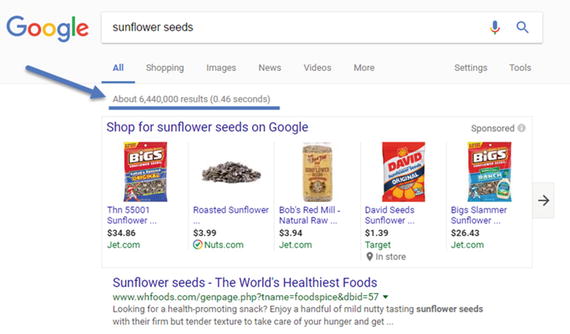

In theory, you could page through 6.5 million pages of search results, but you’re probably not going to do that, and the point is that the higher and earlier you appear in the search results, the better. In general, the initial goal is to appear somewhere on the first page, or within the first 100 results, and then to work on increasing your rank from there.
SEO is the process of maintaining your rank and ideally increasing it. It is fair to say that aside from thinking about technical things like using meta descriptions (see Chapter 9) and doing keyword research, that developing content and adding it, to strengthen and reinforce keywords, makes sense. Even if you didn’t get super specific about how many keywords were in a particular article you added, for example, you might still benefit from being aware of keywords, and either writing material or working with writers at your company (or freelancers) to develop written material that is related to keywords. For example, if you are a drone manufacturer that offers drone kits, you could write an article on “The Top 10 Considerations for Drone Kits” and write it naturally, where the phrase and keywords appear in the article.
The easiest way to think about gaining experience with keywords is to think about it as a mindset—as you are working on content or working with people who develop content, it can become a conversation to think about keywords and how they will boost marketing objectives. There may already naturally be content that will be added to a site, but an SEO person will instigate that through blog posts, articles, etc.
Doing Basic Keyword Research
We’re going to look at two options for basic keyword research, based on a scenario of a sunflower farmer who wants to sell some sunflower seeds. Farmer Sally sits down at her computer and has a lot of options, but she likes to use a few different tools. One easy one to use is Wordtracker ( https://app.wordtracker.com/ ).

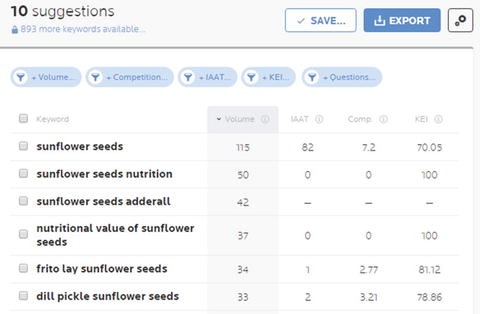
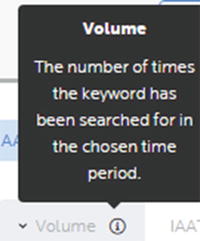
In general, what you see is a guess about traffic, in thousands, in the volume column, and an estimate of the amount of competition. This tool also provides suggestions of other keywords to consider (sunflower seeds nutrition). These suggestions are called “long-tail keywords ,” and they are basically a little bit more specific. That means they could potentially pick up more traffic.
Wordtracker in general is one of those services/sites/tools that is worth becoming familiar with as you do keyword research and learn about the process. Aside from trying the tool to identify keyword opportunities, Wordtracker also has some good learning materials:
https://www.wordtracker.com/academy
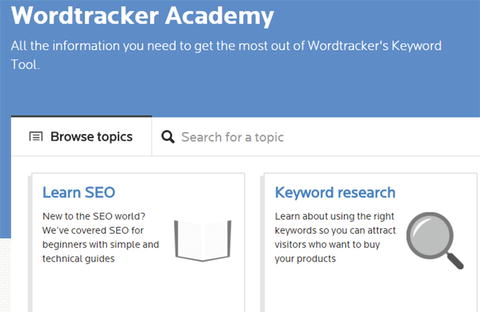

AdWords Keyword Planner
Google AdWords keyword planner is a common tool for keyword research and it highlights the connection between SEM (AdWords—search engine marketing) and SEO. In order to use it for SEO, you need to start an AdWords account. The easiest way to do that is to have a Gmail address, but if you like, you can use a non-gmail address to establish a Google account.
To start an account, go to www.google.com and start the process.

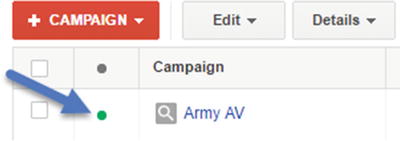

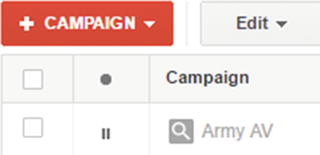
By jumping through those hoops, you’ll have an active AdWords account, and you’ll be able to use the integrated Keyword Planner tool.
Trying the AdWords Keyword Planner

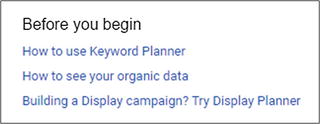
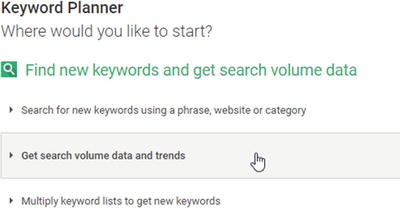
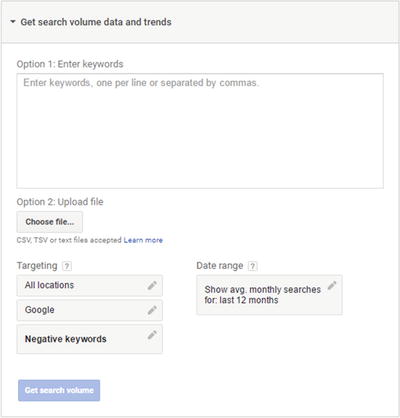


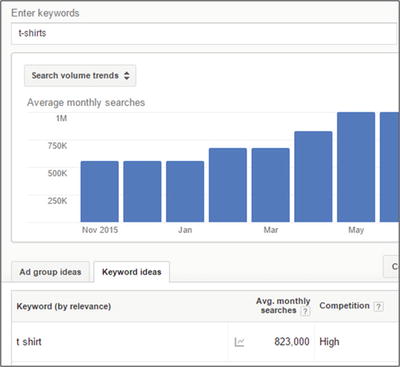
There’s a lot of interesting information, but the main purpose is to get a general idea of how much search volume there is. In the earlier search window, the “targeting” was to “all locations,” meaning the entire world, so narrowing that down when you do a search is a good idea unless your web site is targeting the entire world.
You can also see the relative amount of competition, which is important to be aware of for SEM and SEO purposes.

With that, you have entered the sophisticated world of keyword research using a core tool, the AdWords Keyword Planner! Congratulations!
Now for a bit of fun.
Activity: Research Keywords

Think of five keywords to start with and use AdWords Keyword Planner to research them. Then, either think of five more keywords or use Wordtracker. Type one of the first five keywords and see what Wordtracker suggests. Register for the free trial if you have to.
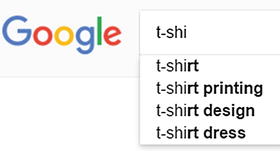
Make a Keyword Target List
As part of the activity, make a keyword target list that includes search volume and amount of competition.
Make a Keyword/Topic List
Take a look at your list of keywords and then generate ideas for titles and topics of blog posts or articles you could write that relate to each keyword. Think about how you could place a keyword into the title of the article, as well as into the text of the article at least once.
This exercise represents the intersection of SEO and content development, where you’re going beyond just developing content and you’re thinking about how keywords and content relate. In this case, you’re starting with keywords and developing keyword-driven content.
To take this exercise one step further, try reviewing the articles from the last chapter about some of the steps you can take to do an SEO audit. Try some of the related tools and pretend that you were helping a new t-shirt business that has a web site but hasn’t done SEO before. Make a list of the things they need to set in motion. Check out these articles:
https://moz.com/blog/how-to-perform-the-worlds-greatest-seo-audit or http://tinyurl.com/mozaudit
and
http://www.plusyourbusiness.com/first-9-seo-tasks/ or http://tinyurl.com/9seotasks
Don’t worry about doing all the steps; just make a rough plan of the kinds of things you need to do, including the tools you plan to use.
The list probably would/should include using webmaster tools, which we look at in Chapter 7, so don’t worry about that too much. Just take a look at things at a high level for now.
Have fun!
Additional Resources
Beginners Guide to SEO: http://moz.com/beginners-guide-to-seo/keyword-research or http://tinyurl.com/mozbegi
Keyword Volume Tools: http://moz.com/blog/keyword-volume-tools or http://tinyurl.com/mozkeytools
Finally, you can find free SEO tools at https://moz.com/tools .
Conclusion
Congratulations on exploring the “10% of SEO” outside of content! In the world of technical tweaks, the larger the company is, the more revenue is at stake, and the larger the effort that companies generally make with SEO. There’s no one rule about how to do it or what kind of resources to allocate, but it’s fair to say that as a top skill to get people hired, a full-time SEO person might spend most of their time doing the technical tweaks and measuring performance. The technical side is definitely important, but it’s easy to get carried away and lose sight of the equally or more important fundamental need for good content.
If you find yourself apply for a full-time SEO position, you’ll want to see if it involves content development. If it doesn’t, you’ll probably want to ask them why in an interview and see if the digital marketing team uses copywriters to develop content to boost SEO results. If they don’t, you might suggest that they consider it at some point.
In a “multiple hats” role or if you are doing SEO yourself, find some way to make sure you are prioritizing and developing content alongside the technical things you do. The technical tweaks are only part of the picture.
